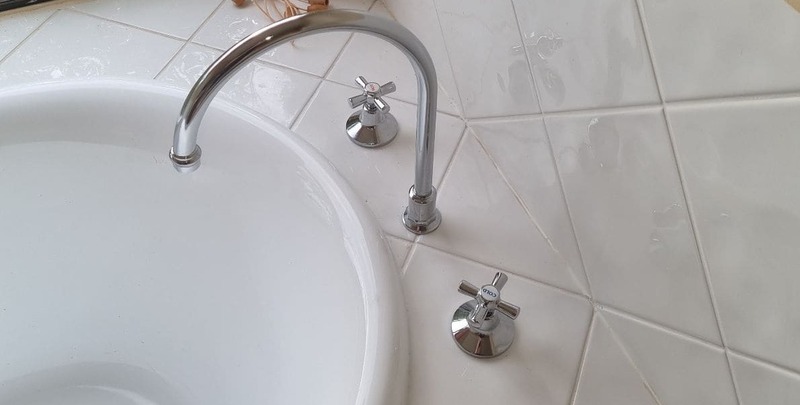
Dealing with an Annoying Dripping Tap
If you’re dealing with an irritating leaking tap, you’re not alone. It’s a common domestic problem. A dripping tap not only wastes water but can also be an annoying and costly problem.
Whether dripping tap is in your bathroom or your front yard, it’s costing you money (and possibly causing a giant mess).
The good news is that fixing a leaking tap is a common household repair that you can tackle yourself in many cases. In this comprehensive guide, we’ll walk you through the step-by-step process of fixing a leaking tap, regardless of your level of DIY experience.
From gathering the necessary tools to completing the repair from beginning to end, we’ll provide clear instructions and useful tips to help you successfully stop the drip and conserve water. Let’s get started.
Understanding the Basics
Before diving into fixing a leaky tap, it’s essential to grasp the basics of how taps work and the common reasons behind leaks. It’s not always a broken washer that is causing the leaky tap.
By understanding these fundamentals, you’ll be better equipped to diagnose the issue and proceed with the appropriate repair steps.
Let’s examine the essential knowledge and tools you need on your leaking tap fixing campaign.
Gathering the Necessary Tools
To effectively fix a leaking tap, it’s crucial to have the right tools at your disposal.
The basic items include tools such as an adjustable wrench and screwdriver, but you could also need specialised tools such as a cartridge puller or O-ring pick. Here’s a basic checklist:
- Adjustable shifting wrench
- Screwdriver (flathead or Phillips, depending on the type of screws)
- Replacement washers and O-rings
- Valve seat dressing tool
- Plumber’s tape (thread seal tape)
- Plumber’s grease
- Towels or rags for cleanup
- Bucket or container to catch water
- Penetrating oil (if the tap components are stuck)
- Flashlight (if the area is poorly lit)
- Needle nose pliers (if necessary for removing or tightening specific parts)
- Safety goggles or glasses (to protect your eyes)
Having these tools and items on hand will save you time and frustration during the repair process. If you don’t have these items, it might be time to visit your local hardware store.
Whether you’re a seasoned DIY enthusiast or a beginner, having the right tools will ensure a smooth and efficient fix for that bothersome leaking tap.

A Step-by-Step Guide
When leaking taps are starting to drive you mad, there’s no time to waste. Let’s get started. Here’s a step-by-step guide to solving the problem:
- Turn off the water supply: Locate the isolation valves beneath the sink or shut off the main water supply to the house.
- Prepare your workspace: Place towels or rags around the tap to catch any water and prevent damage to the surrounding area.
- Dismantle the tap: Use a screwdriver to remove the tap body and handle, remove the tap skirt and tap bonnet, and expose the inner components.
- Inspect the tap washer: Check the tap washer and jumper valve located at the end of the spindle. If it appears worn, damaged or hardened, it needs replacing. Sometimes jumper valves can come off with the tap body. This is not a problem, as long as you know where it is.
- Replace the broken washer: Unscrew the spindle and remove the old washer and jumper valve. Replace it with a new one of the same size and type (e.g. replace a rubber washer with a rubber washer). Apply a thin coat of plumber’s grease to ensure smooth operation.
- Check the O-ring: Examine the O-ring located around the spindle or under the tap handle. If it’s cracked, worn or loose, it should be replaced.
- Replace the O-ring: Remove the old O-ring and install a new one of the appropriate size. Apply plumber’s grease for lubrication.
- Address loose connections: Use an adjustable wrench to tighten any loose connections beneath the tap handle or at the base of the tap.
- Smooth the valve seating: If water still leaks after replacing washers and O-rings, use a valve seat dressing tool to smooth out any rough surfaces. Follow the tool manufacturer’s instructions for proper usage.
- Reassemble the tap: Put the tap body (or tap bonnet) and handle back in place and secure it with the screws. Make sure everything is properly aligned and tightened, including the cover plate.
- Turn on the water supply: Slowly turn on the water and check for any leaks. If everything looks good, you’ve successfully fixed the leaking tap.
Remember, replacing tap washer and jumper valves is relatively easy, but it could be something more than worn-out washers. If you’re unsure about any step or you encounter difficulties, it’s best to consult a qualified plumber for assistance.
Troubleshooting Common Issues
This concise guide will help you troubleshoot common issues and find effective solutions. By following these steps, you can save water, prevent further damage, and regain control over your plumbing.
- Identify the problem: Determine if the leak is coming from the spout or the handle. A spout leak typically indicates worn-out tap washers, while a handle leak may indicate a faulty O-ring.
- Dripping tap: If your tap drips even when it’s fully closed, the washer may need replacing. Disassemble the tap, locate the tap washer at the end of the spindle, and replace it with a new one of the same size and type.
- Handle leak: If water seeps around the tap handle, the O-ring may be worn or damaged. Remove the handle, locate the O-ring, and replace it with a new one. If you’ve got a tap button rather than a handle, it might be a more complex job.
- Thread seal tape: For minor leaks in threaded connections, wrap the threads with plumber’s tape (thread seal tape) to create a watertight seal.
Remember to turn the water back on after completing the repairs and check for any leaks. By following these troubleshooting steps, you can effectively address common issues with leaking taps and restore your water flow to a leak-free state.

When to Call a Professional Plumber
While repairing a leaking tap can often be a DIY project, there are instances when it’s best to call a fully qualified plumber.
If you encounter complex plumbing systems, lack the necessary tools or experience, or have attempted repairs without success, it’s time to bring in the professionals.
Leaks originating from hidden pipes, persistent drips or extensive damage may require specialised knowledge and equipment.
Rather than making a bad situation worse, don’t hesitate to contact a skilled plumber who can efficiently diagnose the issue, offer tailored solutions and ensure a long-lasting fix for your leaky faucet.
Stopping the Drip
Silencing annoying leaking taps is a task that can be tackled with the right knowledge and tools, along with a trip to your local hardware store.
By following the troubleshooting steps outlined in this guide, you can identify common issues such as faulty washers, worn-out O-rings or loose connections, and take the necessary steps to address them.
Remember to turn off the water supply, gather the required tools, and work carefully to avoid further damage. However, if you’re uncertain or encounter complex problems, don’t hesitate to call a plumber for professional assistance.
With patience and determination, dripping taps can be successfully fixed, restoring peace (and quiet) to your plumbing system. If you’re unsure about doing the job yourself, contact the leaky tap experts at Mr Emergency today.
Please note: This information is provided for advice purposes only. Regulations differ from state to state, so please consult your local authorities or an industry professional before proceeding with any work. See our Terms & Conditions here.


